You want to improve your riding skills but you don’t have a horse to practice on. I have been in your shoes, but I figured out ways I could become a better rider despite lacking extra time on a horse.
How Can You Improve Your Riding Without A Horse? You can improve your riding without a horse by:
- Becoming more aware of your body
- Learning more about riding and the techniques
- Understanding horses better
- Creating a positive mindset
- Visualizing your riding
- Getting fit for riding
- Watching others ride
- Setting riding goals
- Simulating horse riding
This is a general idea of the areas you want to work on to get better at riding without having a horse. Now we are going to dive into detail about specific ways you can improve your riding off a horse that will bring your riding to the next level.
1. Improve Your Posture & Fix Imbalances In Your Body With Stretching Exercises For Better Riding
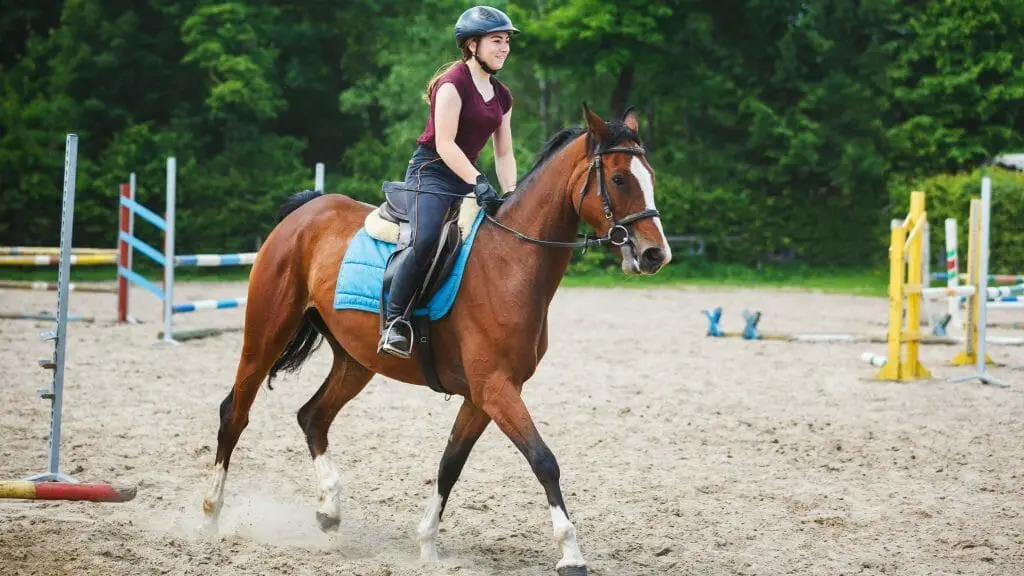
There are specific areas on your body that can be really tight which hinders your riding. In order to ride well, your body needs to be equally muscled and well as equally flexible on both sides.
Riding is completely symmetrical in its application to aids and requires you to be skilled and efficient in both your left and your right sides.
Applied Posture Riding
If you can improve your posture on the ground it will improve your posture in the saddle. If you do regular stretching routines and are more flexible you will be able to move more fluidly while riding which will mean a happier horse and rider.
When riding with correct posture and alignment, sitting straight and balancing in the saddle becomes much easier. You get that through, evening out your body by stretching and building your core strength.
Part of why we become uneven and tight in certain areas is most commonly through constantly using one side of our body more than the other or using bad posture on a daily basis.
Some Examples
- You carry your baby with your right arm
- You lift and carry a water bucket with your right hand.
- You muck stalls on the same side every time.
- You sleep on the same side every night.
- You slouch forward with your shoulders rolled when working at your desk or watching tv.
- You lean to the right while sitting at your desk.
Areas of tightness that affect riding:
- Hip joints
- Pelvis
- Lower back
- Calves
- Ankles
- Glutes
- Hamstrings
- Groin Muscles
- Quads
- Shoulders
- Neck
Along with a stretching routine, Yoga is great for loosening your body. I don’t like the spiritual aspect of Yoga but the stretches are super helpful.
When I used to do Yoga with my family just once a week I was so much more flexible than I am right now. Granted I had a baby and time off from riding but still. I have started implementing Yoga stretches in my morning routine only this week and I am starting to notice a difference in my riding only a few days later.
Not only can Yoga help with loosening up your body but it also can help improve your balance, posture, coordination, and strength.
Takeaway: Improve your body’s evenness, flexibility, your posture, and your riding will improve immensely, do this through stretching routines for equestrians, or give Yoga a shot.
2. Strengthen Your Core With Pilates To Get Better At Riding

If there was one area in your body you want strong for riding horses more than any other, it would be your core muscles. Your core is your abs, your center, and your back.
Pilates works on the core as well as other important aspects such as coordination, balance, and flexibility which will all affect your riding.
The core muscles are the key to good posture, good horse riding, good balance and absolutely for back pain control.
Applied Posture Riding
Riders who do pilates find that it makes a significant difference in their riding ability. While researching I found riders who started doing pilates in conjunction with their riding found they felt more balanced and centered, sat better in the sitting trot and canter, and had more stamina.
Ways Pilates Can Benefit Your Riding
- Correct breathing
- Improved stamina and coordination
- Core strength for stability and balance
- Better posture and alignment
- Increase hip independence
- Ability to sit and move with the horse better at all gaits
- More relaxed while riding
There are programs out there that focus specifically on pilates that benefit equestrians. For example, check out dressageridingtraining.com.
Takeaway: A strong core is essential to better riding and pilates is a great way to strengthen your core.
3. Improve Your Riding With A Daily Workout Routine That Strengthens Your Equestrian Muscles And Builds Stamina

Even though you may be doing stretching, yoga, and pilates it is still beneficial to work your whole body with strength and cardio training.
Being strong overall and having good stamina is an important part of being the best equestrian you can be.
The more fit you are, the easier it is to keep your posture, move with the horse, communicate clearly to your horse, and breathe more easily.
How many of us huff and puff as we jump a course or do a dressage test? I know I do when I am out of shape, like right now.
How many of us feel the burn as we ride a couple of laps around the arena both ways in half seat? That’s me right now. I am out of shape after having my first baby and have some work ahead of me to get back to how I was before. I want to be better than I was before.
If you are not physically fit when you ride you will tire much more quickly and start to make more mistakes in your riding as a result.
My Favorite Cardio Exercises For Equestrians
- Jumping Rope
- Swimming
- Bike Riding
- Walking
- Hiking
Special Tip: Ride a bike and improve your two-point (half seat), strengthen your legs and build stamina.
Riding a bike out of the saddle to some extent mimics riding in a two-point position on a horse. You will have to lean forward a little and keep your balance in the same kind of way
Wikihow.com
Links To Equestrian Strength Training Exercises
- 7 Exercises To Improve Lower Body Strength And Balance
- Best Body Weight Exercises For Equestrians
- Video: How To: Fitness For Equestrians
- 124 Exercises For Equestrians
If you would rather have a physical book that you can reference as you’re working out, take a look at The Rider’s Fitness Program by Dianna Robin Dennis on Amazon. There are 74 exercises & 18 workouts designed for the equestrian rider. And they have picture examples.
Takeaway: Your fitness correlates with how long you can ride before you start getting out of breath, tired, and sloppy with your riding. Build your strength and stamina to breathe easier, ride longer, make fewer mistakes, and enjoy riding more.
4. Improve Your Riding Skills By Becoming More Knowledgeable About Riding Techniques
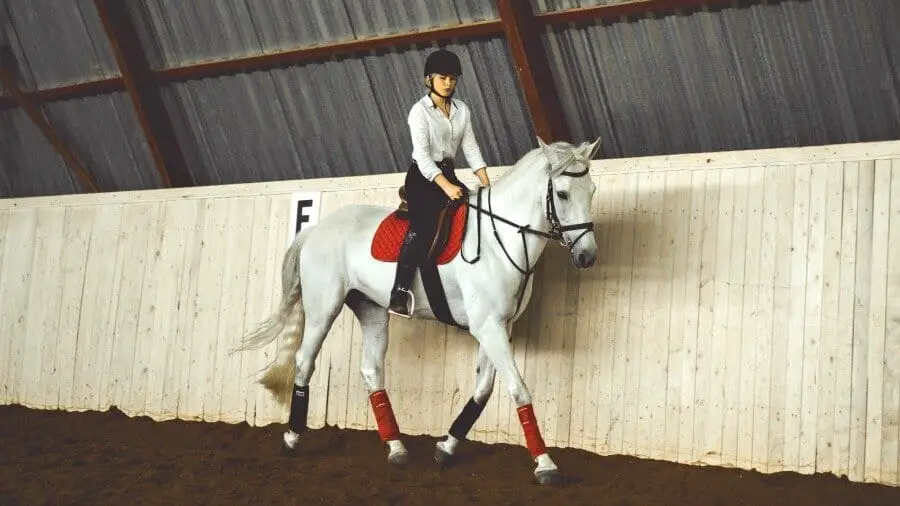
The more you know the more you can improve. There are many things about horseback riding you can learn while you are off the horse such as riding techniques, correct position and how to’s, as well as how to correct certain horse or rider problems.
Examples of some, how-to’s you could learn by reading:
- Learning how to ask for a trot or canter.
- Learning how to ask for a leg yield or shoulder-in.
- Learning how your hips should be moving with the horse in the walk, trot, and canter.
- Learning how to ask your horse to go on the bit.
- Learning how to use half halts.
This doesn’t mean that because you know the steps of what you are supposed to do you will be able to do it immediately when you practice on a horse. You need to develop “feel” when you ride. Know when to apply the aids, and what pressure level to apply the aid for each specific horse and situation. You also need control over your limbs, and your balance, and need to be fit and flexible enough that you don’t become tired and start getting sloppy.
But having an idea of what a rider’s position should look like, how to apply aids for different gaits, movements, and turns, how your body should move with the horse, and what to do in different circumstances. These things will help you ride better.
Ways You Can Become More Knowledgeable About Riding Techniques, Posture, How To, and Correcting Issues While You Are Off The Horse
- Buy a couple of good books or e-books on riding horses
- Find horse blogs that offer information on riding horses and read their content
- Buy or Rent In-Depth Horse Riding DVDs
- Watch YouTube Videos That Teach About Horse Riding Or Offer Tips
- Go To A Horse Riding Clinic
Takeaway: The more you know about how to ride and how you can fix mistakes in the saddle, not only will you be a better rider but also more confident with what you are doing.
5. Learn More About Horse Behavior To Better Communicate And Understand The Horses You Ride

If you understand horse behavior well you will be able to ride better because you will have an idea of what to expect out of the horse. Horses are not robots, they have a mind, personality, will of their own and instincts. They react to their environment and their feelings. Generally, they are willing to please but sometimes they get sour because of mistreatment or their riders are unaware of what the horses are telling them.
Examples of horses saying they are not happy:
- The horse is sore from an ill-fitting saddle- kicking out at the canter, pinning ears, and biting the air while being saddled, resisting to move forward.
- The horse has ulcers- swishing tail, pinning ears, biting the air while being saddled, resisting moving forward, not eating well, and possibly having diarrhea.
- The horse is scared or nervous- jumpy, turns its head away when you try to pet them, rearing or jigging on the cross ties, whites of eyes showing, and calls out to other horses.
- The horse is body sore or something hurts- grooming horse and they are pinning their ears and biting at the air
- The horse has a sore hind leg- Good lifting all legs except one hind leg. Kicks out toward the handler while trying to pick out the hoof on the sore leg.
- The horse is colicking– While riding the horse tries to go down with the rider and roll, the horse is biting and or kicking at its stomach, the horse consistently looks at its stomach, or the horse is lying down and groaning, doesn’t want to get up.
As riders, we are safer when we know what might make a horse spooky or reactive. Being able to read your horse will not only keep you safer but will help the horse feel heard and know when something might not be right, where the vet may need to be called
Knowing the horse’s instincts that drive them as well as body language they use to communicate will help you to know or help you figure out how your horse is feeling and why they do what they do. That gives you an advantage when working with them.
Empathy toward the horse is also important because we want the horses to enjoy their experiences with us, and build confidence in our leadership as well as develop a relationship with us.
How can you learn more about horse behavior and body language?
- Reading books, and articles about horse behavior.
- Watching videos on DVD or on YouTube.
- Watching how the horses react toward each other in the paddocks at your barn. Pay attention to the signals they give to each other.
By watching a herd for a while you will see there is a pecking order. If one of the horses lower in the pecking order does something that a horse higher in the pecking order deems unacceptable, the horse in the higher pecking order will threaten the horse lower in the pecking order.
Sometimes this escalates to chasing, kicking, or biting the lower-level horse.
Takeaway: Learn about horse body language and behavior, to better communicate, be a better leader, be more empathetic, figure out issues the horses may be having, and prevent potentially dangerous situations. This is part of being a good equestrian.
6. Watch Equestrians Ride On YouTube To Get A Better Eye For What Good Riding Looks Like

Watching others ride can give you an idea of how you should be riding. Watching over equestrians can also help you see in practice what you have been reading and learning about riding. It adds one more step rather than just reading about it, now you are seeing it.
What Helpful Equestrian Videos You Can Search For And Watch On YouTube
- Watch quality top-level equestrians ride to see what you are striving to be like
- Watch videos of riders being critiqued by instructors or other riders
- Watch videos of riders critiquing themselves
- Watch how-to horseback riding videos
- Watch videos about improving your horse riding
- Watch videos of equestrians taking riding lessons
- Find videos of other riders and critique their riding
Takeaway: Watching others ride can give you an idea of what you should or should not strive for in your riding as well as learn common riding faults and ways to correct them.
7. Critique Your Own Riding Videos To See What You Need To Improve On
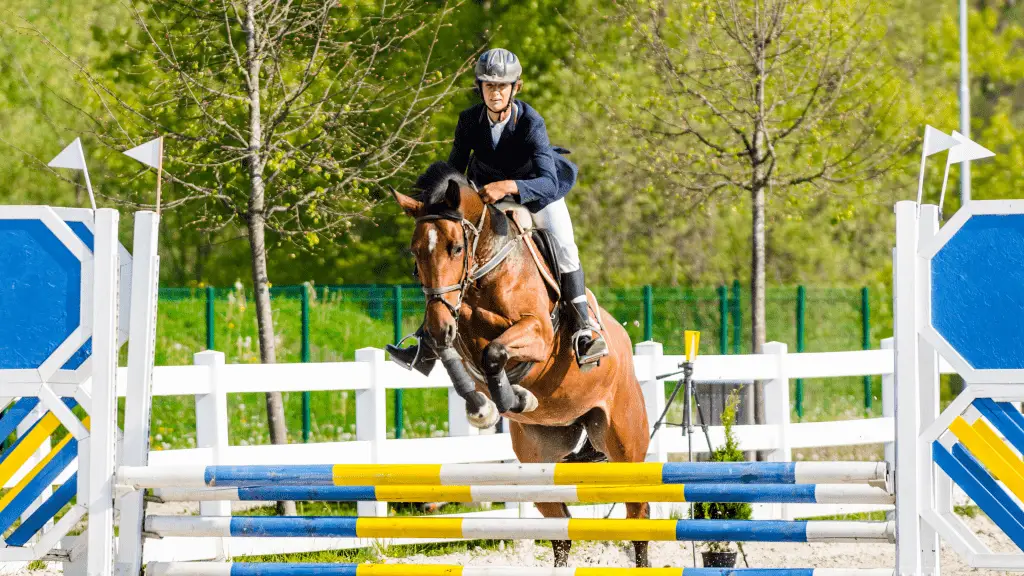
After learning what you should look like while riding it is helpful to critique yourself. Watching videos of others riding is helpful, but watching videos of your own riding is even more helpful.
You may think that you are riding in the correct position because you are used to having your riding feel that way. Then when you look at the video of yourself riding you see that you are leaning too far back and your legs are too far forward and you look like you are riding in a chair seat.
Watching yourself ride on video can help you determine at least some of the things you need to work on.
For example:
A couple of months ago I had myself videoed riding my lease horse Chip. I am out of practice riding right now after being pregnant and having a baby. My riding and fitness have suffered a bit. Riding I felt out of breath but my position felt balanced and aligned.
When I watched myself on the video I realized my toes and knees were sticking out. So now I have been working on a stretching exercise where I try to point my toes directly toward each other.
This will help me when I get back in the saddle to have my knee against the saddle and toes pointing forward. My leg position is already improving just from that exercise. I wouldn’t have realized I was having that problem without watching myself ride. Especially because I am not currently taking riding lessons.
It may even be helpful to put up your video in a forum or on YouTube and share it with other equestrians asking for constructive criticism and how you may be able to fix any problems you might be having. However be prepared for some internet bashing. Hard to avoid trolls.
Takeaway: Watching videos of yourself riding will help you see what you need to improve even if you don’t feel the problem in the saddle.
8. Talk To Other Riders About Riding Techniques To Learn New Ways To Do Things
Taking to other riders about how they ride may bring up some debate. Almost no one rides the same way. Different disciplines have slightly different ways of riding and techniques.
Even in the same discipline as dressage. Different trainers and instructors may teach in a slightly different way.
Personally, I feel that it is valuable to know the different techniques for riding and training. This is because every horse is different and what works with one horse might not work with another horse.
You have to learn what works best with the horse you are riding and working with. This is why it helps to have different ideas to try in your back pocket till you find one that works well for the horse you’re riding.
Ask not only how they ride and what they do but also ask them why they choose to do it that way. What is the benefit over other ways of riding?
Some may say that’s how they were taught with no real explanation while others may be able to explain why they do it the way they do. Then you can have a better understanding in case you want to try it with a horse in the future.
Takeaway: If you can gain a better understanding of different ways to ride you will have different techniques of riding in your back pocket. You can try these out in the future if you are struggling to get your horse to understand what you are asking.
9. Keep A Riding Journal To Become Aware And Improve
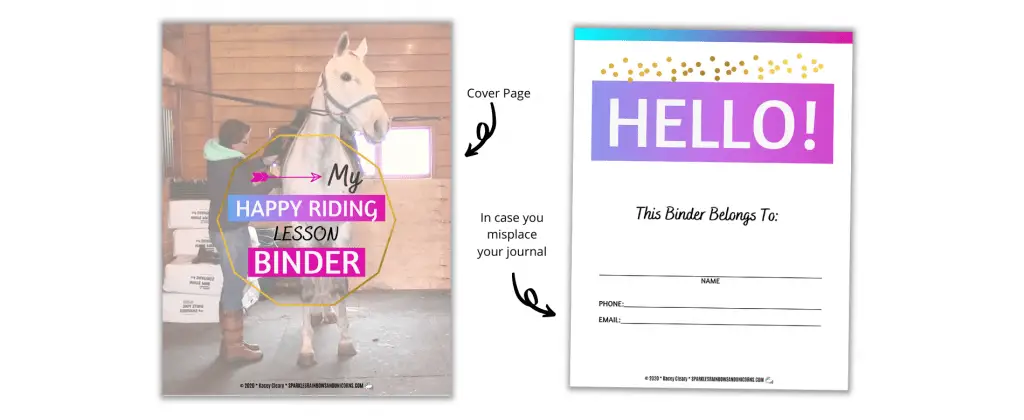
Keeping a riding journal does a number of things to help with your riding.
Check out the My Happy Riding Lesson Binder on Etsy if you want a journal for your riding lessons that will help you keep track of everything you need and more.
- It helps you to remember what you need to work on.
- It gives you ideas for exercises to come back to.
- It shows you your riding progress.
- It makes you more aware and holds you accountable for where you are in your riding.
- It helps you to see patterns in your riding, maybe what you need to work on.
- It helps with creating riding goals
So now you’re probably wondering how to keep a riding journal. It doesn’t have to be complicated. When I was in college I had to keep a riding journal and I basically wrote whatever stuck out in my mind about the riding lesson.
Here are 10 ideas to put in your journal entries.
- Date, weather, and riding location
- Describe the warm-up
- What exercises did you work on?
- What did you do the best during the ride?
- What did you mess up on during the ride?
- What was the most frustrating part?
- What do you think you could have done differently during the ride to have made it better?
- What did the horse’s movements feel like?
- What were the horse’s emotions like today?
- What part of your riding position needs work?
These are just some ideas for your riding journal entries you can use these, use some, or make up your own. Do what you feel is most helpful to you.
Takeaway: A horse riding journal will help you see your progress, make clear what needs work, and be more aware of yourself and the horses you ride.
10. Change Your Mindset From Negative To Positive About Your Riding

There are issues in your riding that are mental, like lack of confidence, not feeling good enough, embarrassment, and fear that hinder your riding. They make you reluctant to press on in your riding journey and cause you to constantly second guess and be negative.
If you can change your negative mindset to a positive one. Your riding will improve. Not only will you get better but you will have fun and actually enjoy riding again.
There are different ways you can try to create a more positive outlook, here are 7.
- Find positive quotes and sayings that really speak to you about your riding. Make pretty posters or wall art and hang them up at your home so you see them daily. You can also do something as simple as writing them on sticky notes and sticking them everywhere as reminders.
- Every single morning thank God for 10 things in your life. It might look something like this: Thank you for my car so I can get from place to place. Thank you for my bed so that I can relax and sleep comfortably at night. Thank you to my mom she loves me and is there when I need someone. Thank you that I get to ride horses and have fun. Thank you that I never starve and always have food to eat. Thank you for my pet cat who is a cuddly bug and cheers me up. Etc. This helps to start the morning off grateful and eventually starts to change your attitude.
- Every time something does not as planned or expected, find one positive in that situation. Try this exercise for a day or a week, or if you really want to make a change for a month.
- Instead of seeing life’s challenges as your life being terrible or constant negative obstacles. See it as an opportunity in your life to grow, become stronger, more skilled, or one day be able to help someone else in the same situation because you already got through it.
- Every time you ride take note of what you did well, as small as it may be. Even the really small improvements count because a bunch of small improvements make big changes over time. It just takes some patience to get there, but if you don’t give up it will happen for you.
- When good things happen in your day or in your riding take some time to let it sink in, be in the present, and really appreciate the moment. Too many of us are thinking about what happened in the past or what might happen in the future. Enjoy what is good now because it will help to create a more appreciative, positive outlook
- Instead of saying you can’t, take some time to find solutions whether they have to be short-term or long-term. Can’t is a word that will make a person feel stuck and helpless. One bible verse I rely on when I feel like I can’t is “I can do all things through Christ who strengthens me.” I truly believe this.
- When things go wrong and you fail, instead of looking at the mistake as a failure, look at it as a lesson. What can you learn from that lesson so that you can improve? We all fail but it is how we look at it that will make the difference. Will you look at failure as if you are never good enough or that you should give up? Instead, think about what you can learn so the next time you do better.
- This is crazy!!! I want you to learn something amazing about WORDS! I bet you have never heard about this before because if you did you wouldn’t speak negative words nearly as much as you do right now. Our words literally have power. Yes, it is true. In the bible, God says, “The tongue has the power of life and death.” Proverbs 18:21. I thought it was a figure of speech or imagery of some sort, but I found out through a YouTube video I randomly came upon one day that it is actually literal. Check it out they do these experiments that you can try and test out as well. This actually has the potential to change your life.
- Rewrite bad experiences to positive ones in your mind. This is about creating a more positive outlook but it is using some visualization which will be discussed further down the post. Let’s say you fell off and are scared to ride. Create a daydream where you are back in those moments and recreate the scenario of what happened. For example, instead of falling off and getting scared, you stayed on, handled the situation, calmed the horse down, and went on with your ride with no problems. You went right back to relaxed harmonious riding. If you keep imagining this often enough, it will rewrite the synapses of your brain that trigger the fight or flight fear response and essentially trick your brain into thinking the fall didn’t happen and you’re fine.
Takeaway: What we think and the words we say have a huge impact on our lives. It will affect our outlook, how we overcome obstacles, and how we perform in life.
11. Improving Your Horse Riding Skills By Creating And Setting Goals

The thing about goals as an equestrian, they can move your riding forward because you are focused on reaching those goals and are putting in the effort to make it happen.
However, don’t let your goals take away from what you love about riding. If it is causing you stress or to feel bad about yourself all the time. Your goal may be too big. The goal is not worth making you feel inadequate or like you don’t enjoy riding anymore.
To fix this problem or keep it from happening, break down the goal into smaller goals. If that is still too challenging break it down into micro-goals. It is better to accomplish really small goals than to go for goals that are too big and feel like you can’t even imagine how you can reach them.
If you stay the course and make small wins, they will quickly add up and add up. Before you know it you will be reaching the bigger goals you once dreamed for yourself but never thought you could reach.
Tips To Achieve Your Horse Riding Goals
- Choose a goal you are motivated to work toward.
- Break each goal down into attainable steps to reach that goal.
- Be consistent, even when you feel like you don’t want to do it. Some days, you just do it no matter how you feel! You will thank yourself later.
- Be flexible because as you well know stuff happens. For example, a horse has a bad day, so make the ride at least end on a good note with something easy. Or a lesson was canceled. Instead, work on riding visualizations which we will talk about next.
- Be patient which basically means enduring long-suffering. It takes a little bit of pain to reach your goals, whether mentally, or physically. But in the end, it is worth it.
Takeaway: Riding goals will help you have a clear direction and keep you motivated and moving forward in your riding.
12. How To Use Visualization To Improve Your Riding
What I mean by visualization is to sit down close your eyes and imagine you are on a horse right now. Visualization is the ability to create or recreate feelings and images in your mind. This exercise connects your mind and body and helps to build muscle memory or create a new positive experience in your mind.
Visualization is daydreaming with a purpose.”
— Bo Bennett
In a way, it is like meditation but you are not emptying your mind. Instead, you are focusing on what you feel when you ride the best you can remember.
And you visualize doing different riding exercises and maneuvers with the horse. So when you actually ride and do the exercises and maneuvers with the real horse, your brain feels like you have been working on it already. This does involve using your imagination.
Your brain has the same activity when you visualize yourself doing something as it does when you are physically performing that action.
Gustavo Razzetti
This can be very helpful for dressage tests, jump courses, getting over the fear of falling and improving riding position.
Visualization is a powerful tool — training the mind in advance increases your performance when the real moment comes. That strange sense of familiarity boosts self-confidence. You just have to go with the flow.
Gustavo Razzetti
You need to get control of the images and thoughts that enter your mind, especially if your mind and focus tend to wander. But you can train your mind to become more focused with practice doing this over time.
Here is a very helpful article for more on visualization. It is on visualization as a whole not necessarily as an equestrian but it can still apply. 5 Visualization Techniques to Help You Reach Your Goals
I also find that abstract imagery can be very helpful. Sally Swift is a great example of this with her books Centered Riding and Centered Riding 2.
Examples of some imagery of abstract visualization in Sally’s books:
- Riding with your bones instead of muscles so that your muscles won’t have to work as hard.
- Siphon some weight out of your heavy leg and transfer it into your light leg
- Hold tiny birds in each hand. You want to hold tight enough that they don’t fly away but soft enough that you don’t hurt them. You also don’t want to turn your hands inward so that the birds bang their heads together.
- Imagine energy bounces in the horse like a coil or a slinky toy.
Takeaway: Visualizing rides and abstract imagery can help you improve your riding by first improving your riding skills in your mind so that they can transfer into the saddle
13. Get Better At Riding With A Horse Simulator
There are crazy awesome horse simulators made by the Racewood Equestrian Center being sold.
There are different versions. One for polo, one for eventing, one for dressage, one for racing just to name a few.
They are crazy expensive starting at about $30,000 and upward. But they are amazing. The horse simulator is mechanical and acts like a perfectly trained and well-behaved horse.
It is essentially an animatronic horse-computer video game that people can ride on. You ride it as you would a real horse with leg aids and reins, but you don’t have to worry about the horse spooking, bucking, rearing, or taking off.
The simulator is able to sense if you are sitting correctly or not, and how much pressure you use with your aids.
There are actually barns that have these simulators that you can take riding lessons on. So if you had a fall and are really afraid to get back on a horse this can be a great way to get back into riding. It can help you build your confidence before you get on a real horse again.
Locations Where You Can Try Out Racewood Horse Simulators:
- Mill Spring North Carolina
- Pinehurst North Carolina
- Los Angeles California
- Wellington, Florida
- Toronto, Ontario Canada
- Airdrie Alberta Canada
- Garfield, Victoria Australia
There are other options to simulate horse riding that are much more affordable but none can compare to the Racewood Horse Riding Simulator.
Here Are More Affordable Options For Those Wanting To Practice Riding At Home:
- Equicizer- “The exercise bike for horse riders” $3000 +
- Horse Balance Builder $900-$1000
- Large Exercise Ball (Look at on Amazon)
Takeaway: I want a Racewood Simulator. But seriously be creative with an exercise ball if that’s what you can afford. These are just supplements to help improve your riding.
For More Helpful Articles
Poll: What Is Your Riding Lesson Situation
I am using polls to understand you better as my readers. So I can relate to you and write better content for you. So I appreciate those of you who vote on my polls.
Cheers, Kacey

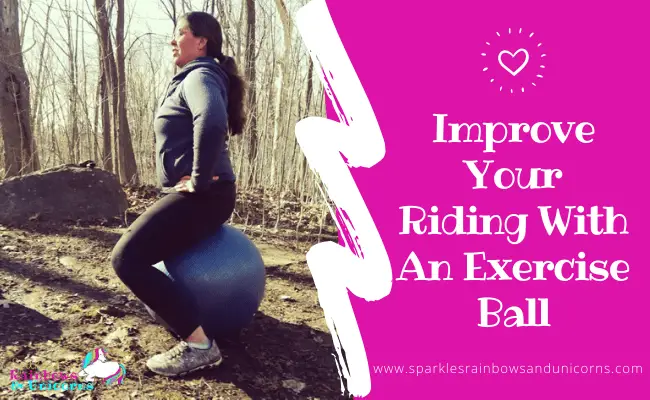
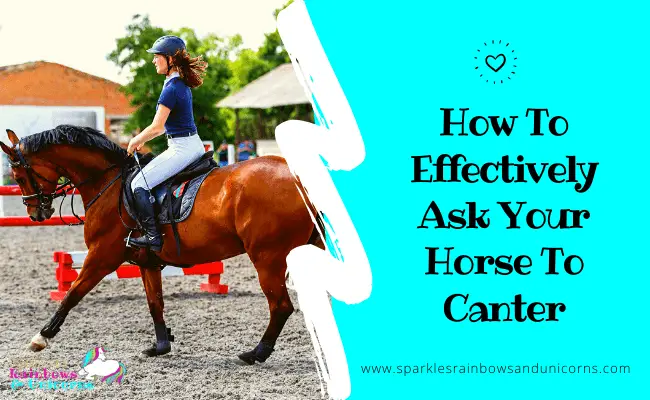

Very descriptive post, I loved that a lot. Will there be a
part 2?
There could be if people are finding this article helpful. I could create some posts going into further detail about each way to improve riding. I did create the post about using an exercise ball. Let me know how I can help! 🙂